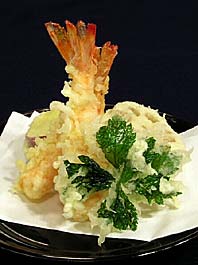Lessons 11 and 12: Agemono: Deep-Frying
Today the use of agemono in the Japanese kitchen is ubiquitous, and no serious student of Japanese cuisine can overlook this wonderful method of preparing delicious Japanese dishes. Many Westerners have heard of the staple of Japanese agemono, tempura. However, tempura is only one of many types of agemono.
In Lessons 11 and 12, TSUJI's professor will explain the four main kinds of deep-frying in the Japanese kitchen.
4 Kinds of Agemono:
- Koromo-age: batter frying, as with tempura
- Su-age: plain frying, without coating
- Kara-age: frying foods in a coating of flour, potato starch, cornstarch, or kudzu root starch
- Kawari-age: modified frying; where various ingredients are used in the preparation of the coating, or where the foods are seasoned before coating
Agemono Techniques:
- The basics behind the four different ways of deep-frying in Japanese cooking
- The importance of the type of oil used in deep-frying
- How to gauge oil temperature
Recipes from Lessons 11 and 12:
- Tempura
- Whitebait Kakiage
- Deep-Fried Eggplant
- Karei Flounder Kara-age
- Deep-Fried Marinated Scallops, and Prawns Fried in Yuba
Next: Lessons 13 - 14 »
